
How do digital locks work?
It's a classic Monday morning, and you’re all geared up for another productive day at work. As you confidently stride towards your building entrance, you reach into my pocket for your trusty set of keys, only to be met with... emptiness. Yes, you guessed it! You’ve misplaced the master keys to the building that you are responsible for!
Now, you stand there, sheepishly peering through the window like a lost puppy, wondering how you’ll enter the building. Thankfully, after what felt like an eternity (but was probably only a few minutes), a kind soul comes to your rescue with a spare key. But you still have a big problem, it’s going to cost you thousands to replace all the locks and keys!
Lesson learned: traditional keys may have their charm, but when it comes to reliability, digital locks are the true heroes of the modern age.
In today's fast-paced world, traditional locks are giving way to digital counterparts, offering enhanced security and convenience and avoiding embarrassing situations or being locked out at the most awkward times.
What are some common traditional locks
Rim lock - A rim lock is screwed onto the back of a door or drawer instead of being fitted into a recess. It is often used for smaller doors, drawers, furniture and garden gates since it is easy to install and requires no special tools. It comprises a strike plate, a dead bolt and a locking cylinder. The dead bolt is operated by turning the appropriate key in the locking cylinder. It then engages in the strike plate to lock the door. A lock case encloses the lock mechanism, and it does not require a cut-out in the door making it significantly easier to install. Rim locks provide less security than other lock types and are more susceptible to tampering and break-ins. Installation is also not suitable for all doors as they must be fitted on a strong material and damage the door surface since holes are required for installation.
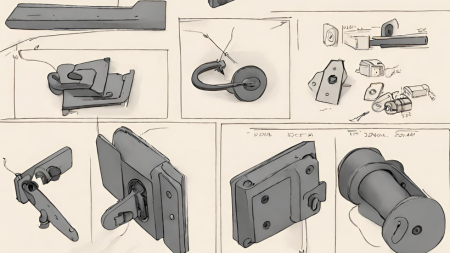
Curved bolt lock - A curved bolt lock is a special lock for use on sliding doors and comprises three variants: the warded lock, the profile cylinder lock and WC curved bolt lock. A curved or hooked dead bolt is required since the straight dead bolt in a standard lock would not lock a sliding door properly. The curved bolt lock can also be equipped with a suitable snap handle, which is ideal for sliding doors that retract into the wall. These locks often offer low burglary resistance and are completely unsuitable for building entrances. Sliding doors along a wall must close against a stop post if they need to be lockable.
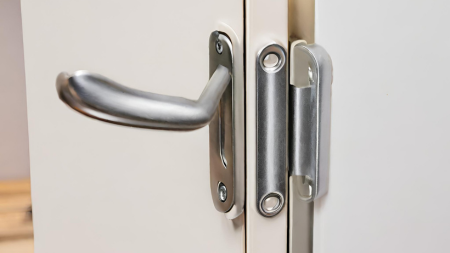
Warded lock - A popular door lock with a simple design is the warded lock, mainly used in interior doors. The associated keys have a wide variety of key shapes with wards, or obstructions, which give this lock type its name. Both the key shape and the keyhole should visually resemble a wave-shaped ward. A warded lock’s main component is the locking cylinder. This consists of the casing, the core and pin tumblers. To lock the door, there is also a dead bolt on the inside, which extends when the lock is operated and then engages in the strike plate. The pin tumblers on the inside are locked or unlocked when the right key is used. The lock features a set of obstructions in the form of a plate in front of the keyway that only allows the key with the correct profile to pass through. These locks can be opened relatively easily with a pick and are therefore only suitable for interior doors without security requirements.

Dead Bolt - The dead bolt is locked by turning the handle and moving a spindle. The dead bolt finally engages in the designated cut-out or in the strike plate in the door frame. In an emergency, it can also be opened from the outside using a small indent and the appropriate tool.
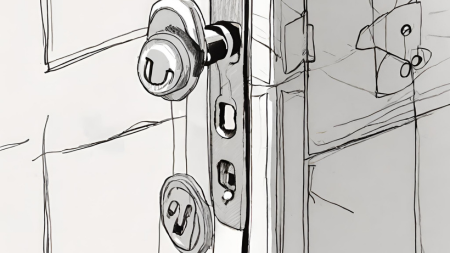
New Age Locking: Digital Locks
What are digital locks?
Digital locks, also known as electronic locks or smart locks, are innovative security solutions that use electronic systems to control access to a building, room, or other secure area. Unlike traditional mechanical locks that rely on physical keys, digital locks utilise various authentication methods, such as PIN codes, keycards, biometric scans or smartphone apps, to grant or deny entry.
These locks are typically battery-powered and feature built-in electronic components, such as microprocessors and sensors, to manage access control.
Transponder: Transponder keys are innovative security devices equipped with RFID technology, providing enhanced security and convenience for locking and unlocking doors.
How do they work?
Our transponder keys offer numerous advantages, including programmability, allowing users to lock and unlock doors with a simple click of a mouse. our transponders are compatible with both the MobileKey system and System 3060, offering versatility and flexibility in various locking applications. Users can seamlessly combine different identification media within a single system, offering customized security solutions tailored to their specific needs. For added functionality, some transponders come with an additional programmable chip, allowing customers to use them across different systems, enhancing their overall convenience and security. With our transponder keys, digital opening and closing are as easy as pushing a button, providing users with a seamless and secure locking experience.
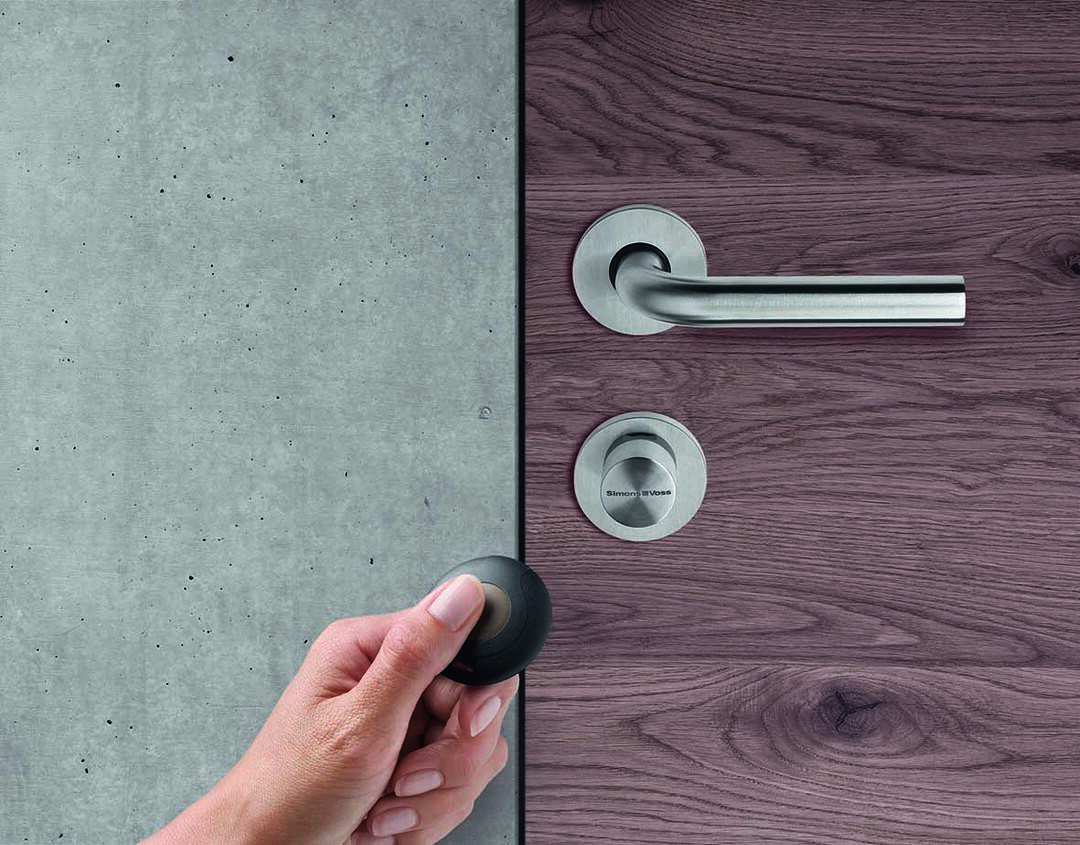
Keypad locks: These locks require users to enter a preset PIN code to gain access. They are commonly used in residential, commercial, and institutional settings.
How do they work?
The lock operates by allowing access to a secured area or property through the input of a pre-set numeric code or combination on a keypad. Users input a predetermined numeric code by pressing the corresponding numbers on the keypad, which is then verified against the stored code in the lock's memory. Upon successful authentication, the keypad lock grants access by triggering the unlocking mechanism, such as releasing a latch or disengaging a bolt. After a designated period or when the door is closed, the lock automatically relocks itself to secure the area. Keypad locks offer a convenient and customisable access control solution for various applications, providing a flexible alternative to traditional key-based locks with features such as auto-locking functions and timed access restrictions.
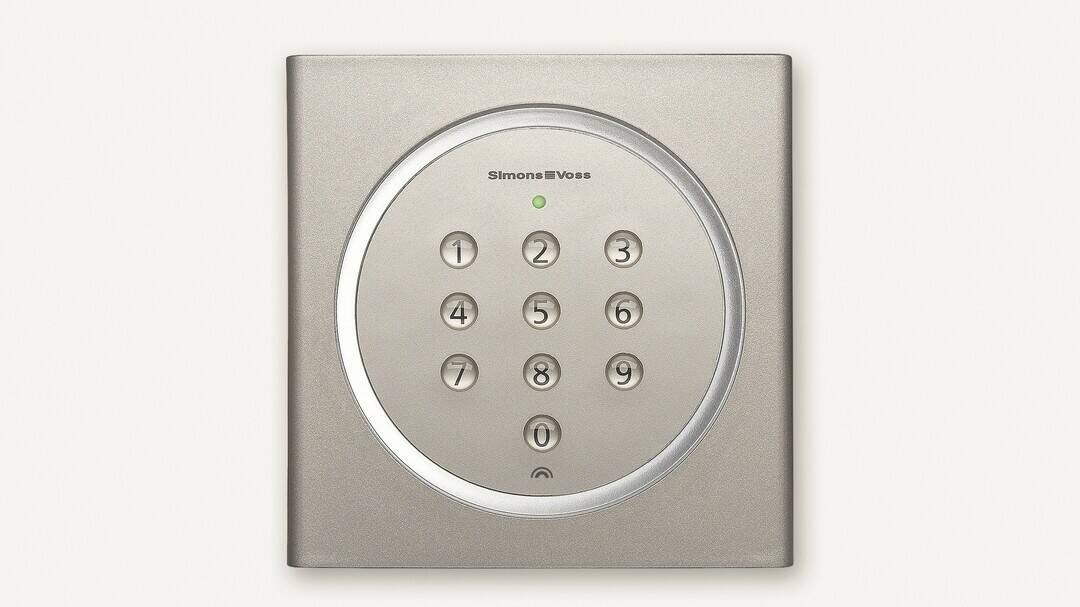
Keycard locks: Keycard-operated locks use RFID (Radio Frequency Identification) technology to read electronic keycards or fobs, granting access to authorised users.
A keycard lock, also known as a card access system or electronic lock, operates by using a keycard containing encoded information to grant access to a secured area or property. Each keycard is embedded with a unique code or credential that is recognised by the lock's card reader. When a user presents the keycard to the reader, the lock's internal system verifies the authenticity of the credential. If the code matches an authorised entry in the lock's database, the lock releases, allowing access to the secured area. Keycard locks can also be programmed to restrict access based on factors such as time of day or user permissions, providing enhanced security and control over access to the premises.
Smartphone-operated locks: These locks can be controlled remotely using a smartphone app, allowing users to lock or unlock doors from anywhere with an internet connection.
A smartphone-operated lock works by connecting to a mobile device via Bluetooth, Wi-Fi, or a dedicated app. Users can control the lock remotely using their smartphone, granting access to the secured area without the need for a physical key. To operate the lock, the user simply opens the lock's corresponding mobile app and sends a command to unlock or lock the door. The app communicates with the lock either directly via Bluetooth or over the internet if the lock is connected to a Wi-Fi network.
According to research done by Business Research Insights, the global digital door lock system market size was USD 1487.2 million in 2022. The market is expected to reach USD 38544.1 million in 2028, exhibiting a CAGR of 17.2% during the forecast period. The market for these types of locks has been steadily growing due to increased concerns for security and the rise in need for remote access management. Digital locking systems offer tons of benefits that are making it increasingly popular.
Benefits of digital locking systems
SimonsVoss digital locking systems offer a wide range of benefits that cater to the evolving needs of modern security requirements.
- Enhanced Security: SimonsVoss digital locks utilise advanced encryption technology and authentication methods, such as RFID cards and PIN codes, to provide robust security against unauthorised access. With features like tamper detection and remote monitoring, these systems offer peace of mind and protection for valuable assets.
- Flexible Access Control: Digital locking systems allow for flexible access control, enabling administrators to grant or revoke access permissions remotely. This flexibility is particularly useful in dynamic environments where access needs may change frequently, such as offices, co-living spaces, or educational institutions.
- Convenience and Ease of Use: Digital locks offer user-friendly interfaces and intuitive operation, making them easy to use for occupants and administrators alike. Whether it's unlocking doors with a keycard, entering a PIN code, or using a smartphone app, these systems provide convenient access solutions tailored to individual preferences.
- Remote Management Capabilities: Administrators can manage access permissions, monitor door activity, and receive real-time alerts remotely from a centralised platform. This remote management capability streamlines operations, reduces administrative burden, and enhances overall efficiency.
- Scalability: The system is highly scalable, allowing organisations to easily expand or modify their security infrastructure as their requirements change over time. Whether it's adding new doors, integrating additional access control features, or extending coverage to new facilities, these systems can scale up or down to accommodate growth or organisational changes seamlessly. This scalability ensures that organisations can future-proof their security investments and adapt to evolving security threats or operational needs with minimal disruption.
- Retrofitting: One of the significant advantages is their ability to retrofit onto existing doors and infrastructure without the need for extensive modifications or replacements. This means that organisations can upgrade their security systems cost-effectively and with minimal disruption to day-to-day operations. Whether it's replacing traditional mechanical locks with digital ones or integrating digital access control features into legacy security systems, SimonsVoss solutions offer a convenient retrofitting option that enables organisations to enhance security without the need for costly renovations or downtime.
- Durability and Reliability: Built with high-quality materials and innovative German engineering, the digital locks are designed to withstand the rigors of daily use and harsh environmental conditions. With long battery life and minimal maintenance requirements, these systems offer reliable performance and longevity.
- Save on electricity costs: When it comes to keeping your facilities secure, every penny counts. Consider this: traditional electronic mag locks not only consume electricity constantly but also rack up a hefty bill, with a yearly cost of £339.45 per lock. In contrast, SimonsVoss SmartHandle AX operates on four cost-effective CR2450 lithium batteries, ensuring your peace of mind for up to 7 years at a mere £1.28 per year. By making the smart switch, you'll save a substantial £338.17 annually, all while maintaining top-tier security.
SimonsVoss, a leader in digital locking technology, offers cutting-edge solutions that combine innovation and reliability. Their proprietary systems utilise advanced encryption algorithms and wireless communication protocols to ensure maximum security and ease of use. Whether it's our digital padlocks or transponder keys, SimonsVoss provides peace of mind with every lock.
Digital locks represent the future of security, offering a potent combination of advanced technology and user-friendly design. Whether it's for residential, commercial, or industrial applications, digital locks provide a reliable and effective solution for safeguarding valuable assets. Contact SimonsVoss to find the best solution for your locking needs.
